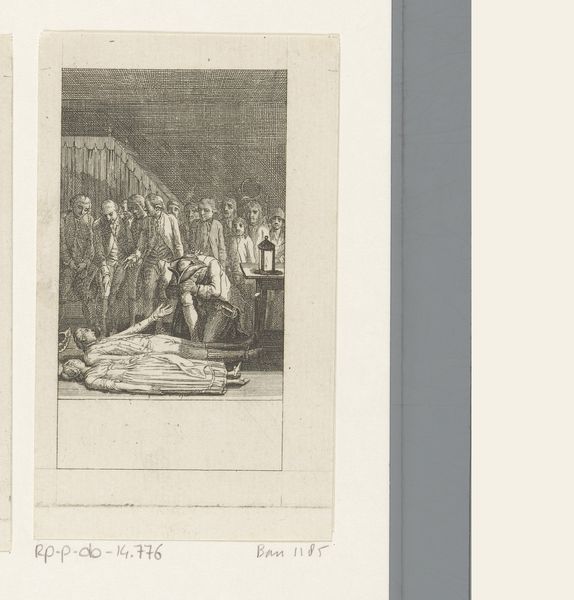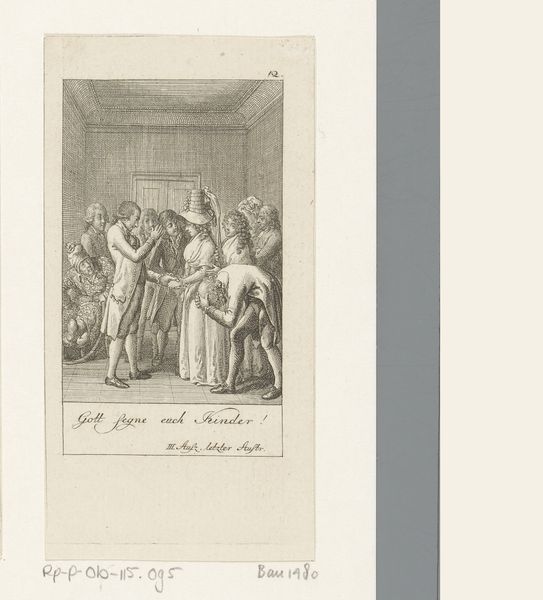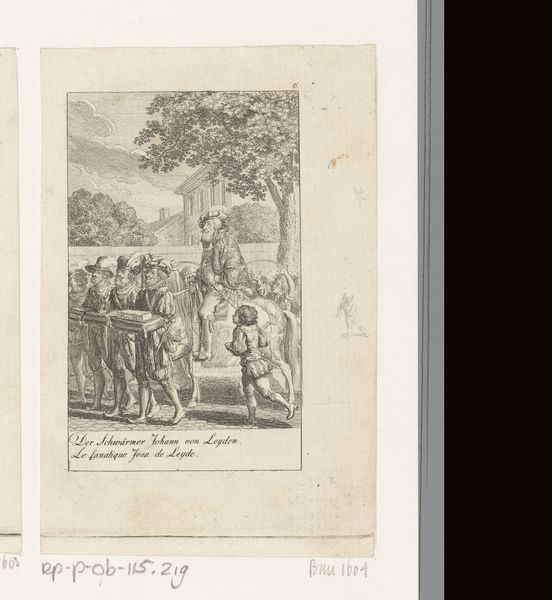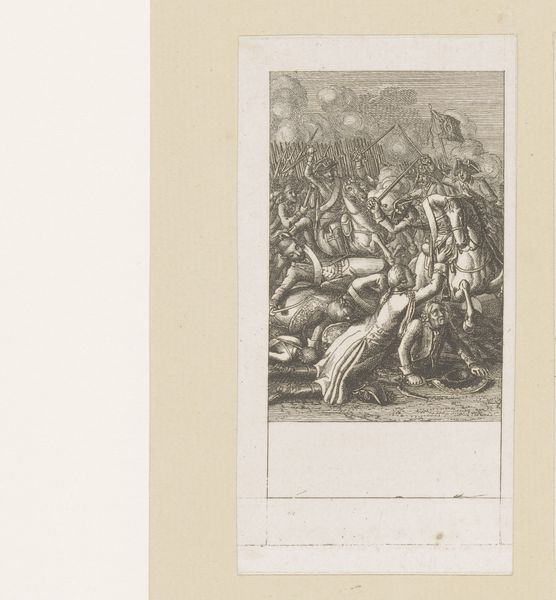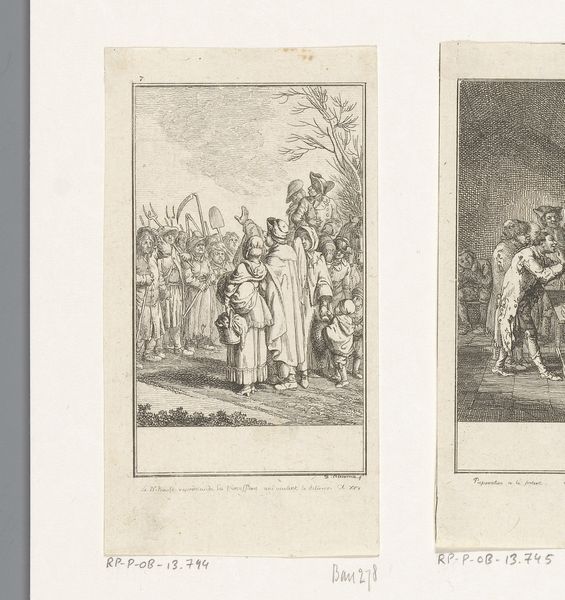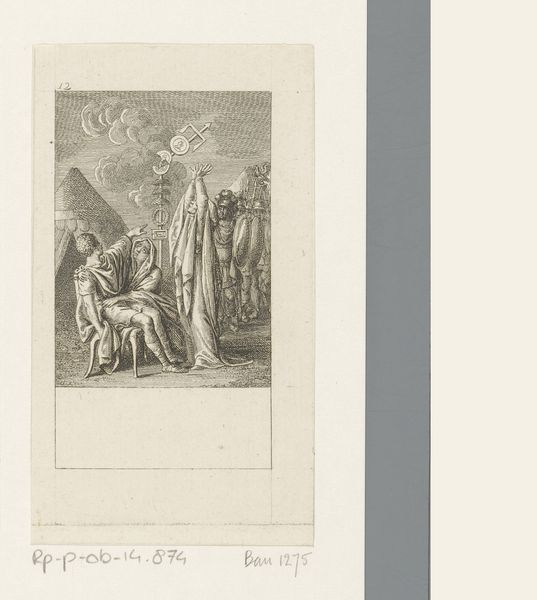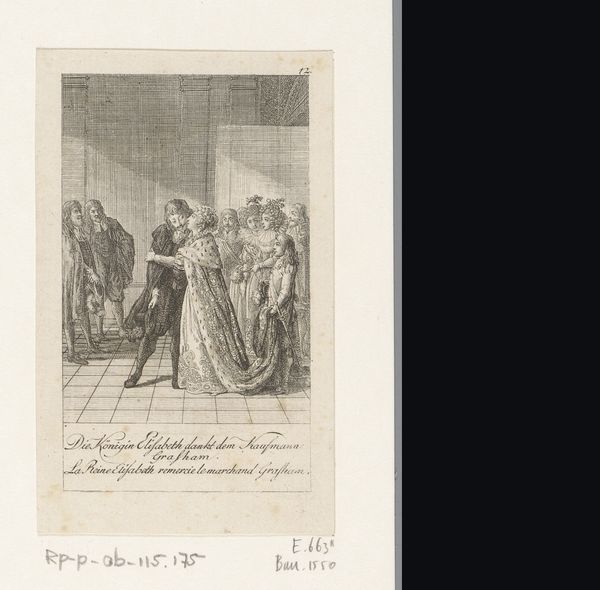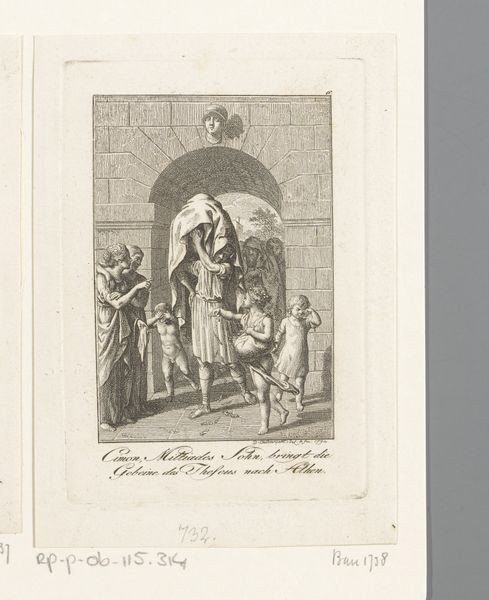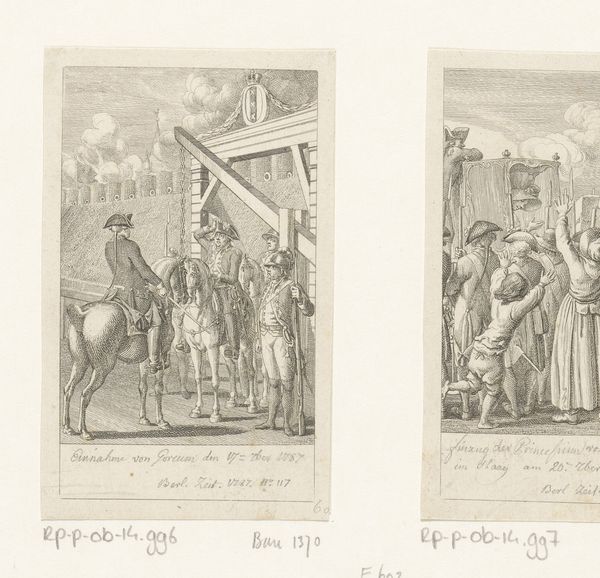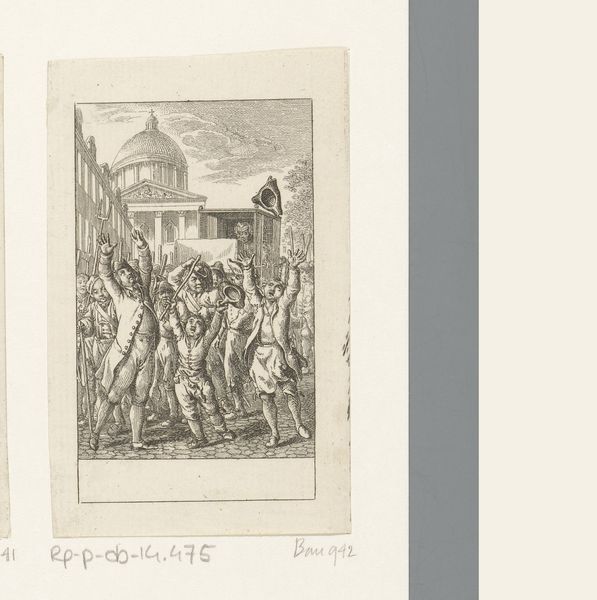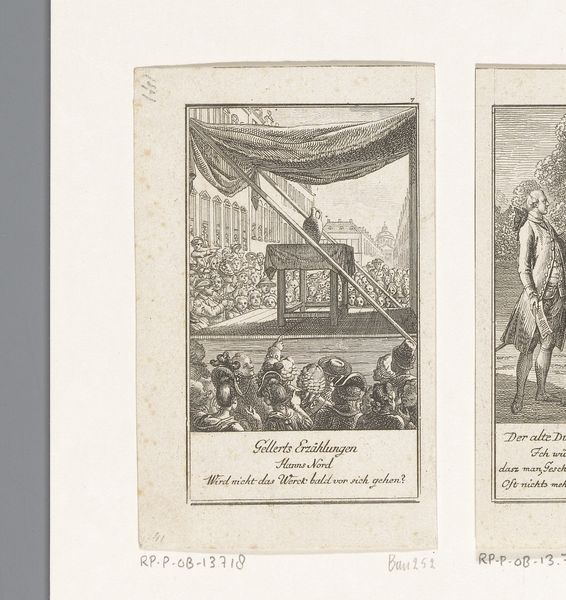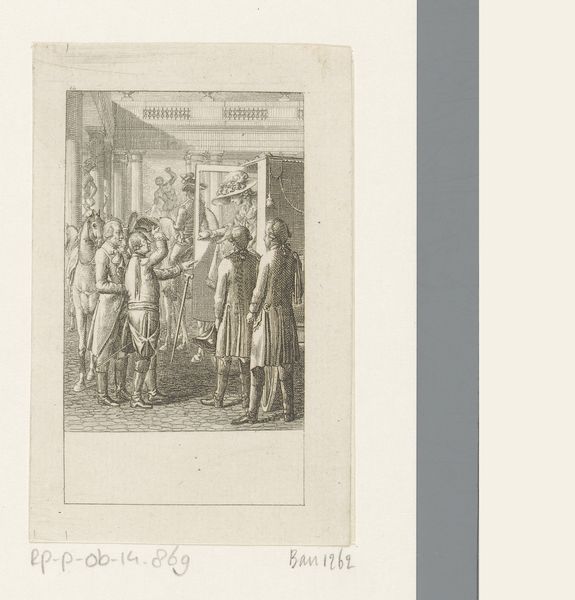
Dimensions: height 104 mm, width 69 mm
Copyright: Rijks Museum: Open Domain
Curator: Looking at this 1786 print by Daniel Nikolaus Chodowiecki titled "Voluntary Combustion of the Widow," I'm immediately struck by the utter devastation of it all. It's hauntingly serene, even. Editor: Serene? I feel anything but serenity looking at this scene. The pallid lines of the figures, the stiff procession—it evokes a sense of dread and societal condemnation, wouldn't you say? Curator: Perhaps. But it’s rendered in such a way, using line engraving, that even the horrific act itself feels almost…ceremonial. I see less condemnation and more an observation of ritual. Look how each line meticulously carves out the scene—the flickering pyre, the expectant crowd, even the gentle arc of smoke feels so deliberate. Editor: True, Chodowiecki’s technique brings a certain formality, but isn't that almost more chilling? To depict such a barbaric practice, Sati, with this level of formal remove…It seems like a commentary on the power of social structure overriding basic human empathy. See how the composition centers the widow’s almost sacrificial pose. Curator: Or is it that he finds a beauty in structure? A line defines her—and us. He presents this awful act within the framework of narrative and Romanticism; it’s not so much a judgment but an inquiry into why such acts happen. This engraving itself almost becomes an anthropological study—rendered with an exquisite, albeit disturbing, elegance. I am reminded of an essay I wrote, once, on this theme... Editor: Right, the Romantics' interest in the sublime, the mixture of awe and terror. And you can absolutely see how line functions here not only as descriptive, rendering details sharply, but also as emotive, shaping the emotional tenor of the whole composition through contrast. Curator: Ultimately, “Voluntary Combustion” leaves us wrestling with uncomfortable truths, I'd say, the push and pull of human drama against social conventions—it certainly leaves me with more questions than answers, after all this time. Editor: Yes, a truly potent piece. It encourages us to examine the dark corners of history, and hopefully, ourselves.
Comments
No comments
Be the first to comment and join the conversation on the ultimate creative platform.
